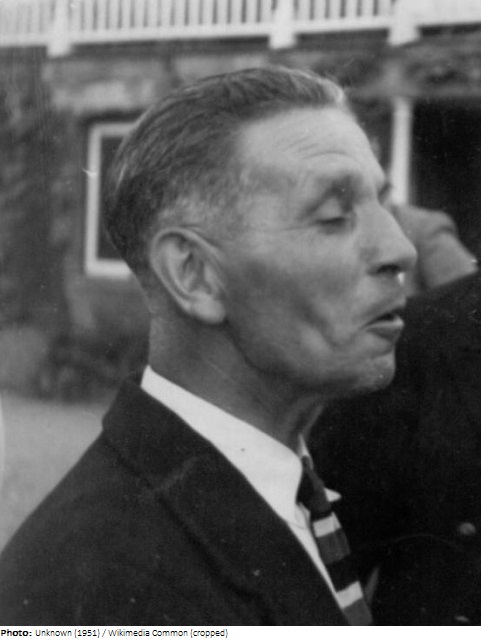Ian Fairbairn

Biographical information
| Roles | Competed in Olympic Games |
|---|---|
| Sex | Male |
| Full name | Stephen Ian•Fairbairn |
| Used name | Ian•Fairbairn |
| Born | 14 April 1896 in Melbourne, Victoria (AUS) |
| Died | 5 December 1968 (aged 72 years 7 months 21 days) in Chelsea, England (GBR) |
| Measurements | 77 kg |
| Affiliations | Thames Rowing Club, Putney (GBR) |
| NOC |  Great Britain Great Britain |
Biography
Ian Fairbairn was educated at Eton College and then the Royal Military College at Sandhurst, from where he was commissioned into the Royal Horse Guards. He was posted to France in 1915, and transferred to the Guards Machine Gun Regiment in 1918. Fairbairn resigned his commission in 1919 after being seriously injured during the hostilities.
Having rowed at college, Fairbairn joined the Thames Rowing Club shortly after World War I, and in 1920 was second in the Silver Goblets at Henley with the 1912 Olympian Bruce Logan. Fairbairn was a member of the Thames eight beaten by Leander in the final of the Grand Challenge Cup at Henley in 1922. He was, however, in the Thames crew that won the Grand the following year when they were coached by Fairbairn’s father Steve, a four-time Cambridge rowing Blue, and regarded as one of the finest coaches ever seen on the River Thames.
The young Fairbairn was stroke of the Thames eight that represented Great Britain at the 1924 Paris Olympics and, despite setting an Olympic best time in their first round heat, they missed out on a medal after finishing fourth, just half-a-length behind bronze medallists Italy.
Fairbairn worked on the London Stock Exchange for a while, and then worked in Paris. He stood as a Unionist (Conservative) Party candidate for Burnley at the 1925 and 1929 General Elections. After obtaining a degree at the London School of Economics, Fairbairn joined M&G Investments in 1935, and was responsible for pioneering Unit Trusts in Britain. M&G’s was the first Unit Trust quoted on the London Stock Market. He was a vice-president of the Thames RC for 40 years until being elected president in 1967, just a year before his death. He was also captain of the club in 1933 and was a Henley steward for 20 years from 1948 up to the time of his death. He also became chairman of M&G in 1943 and of the parent group, White Drummond, from 1955 until resigning both posts in 1967.
Fairbairn’s second wife Esmée served with the Women’s Volunteer Service (RVS) during World War II and was a Civil Defence regional administrator. Sadly, she was killed outright when hit by a flying bomb in Kensington, London, in August 1944. In her memory, Fairbairn established the Esmée Fairbairn Charitable Trust in 1961 and he transferred his personal holding in White Drummond so the Trust could enjoy the financial benefits from it, and they went on to become one of the United Kingdom’s biggest fund raisers. In 2019 the Trust made grants of £35.8 million to a wide variety of beneficiaries like the environment, the arts, food and social change, and children and young people.
In his later life, Fairbairn had a passion for Chamois stalking in such locations as the Pyranees and the Alps of Transylvania. At the time of his death in 1968, Fairbairn was the reigning public schools heavyweight boxing champion. He won the title in 1914 and it had not been contested since then.
Results
| Games | Discipline (Sport) / Event | NOC / Team | Pos | Medal | As | |
|---|---|---|---|---|---|---|
| 1924 Summer Olympics | Rowing |  GBR GBR |
Ian Fairbairn | |||
| Eights, Men (Olympic) | Great Britain | 4 |
Olympic family relations
- Cousin of Eric Fairbairn